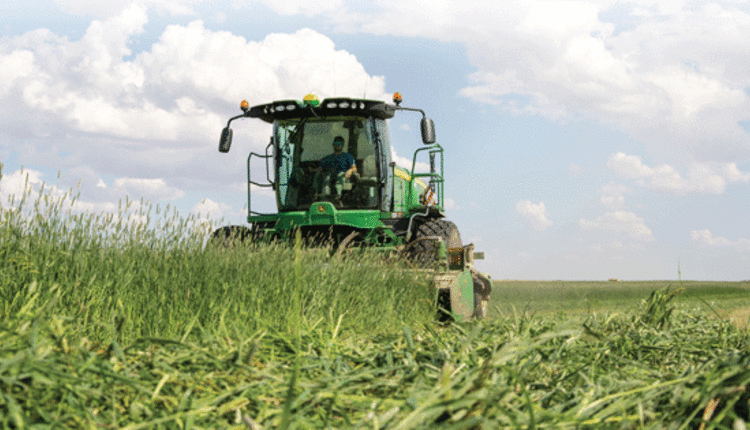
Soap Lake borders Highway 17 to the east and a town by the same name to its south. Basalt cliffs define the lake with water that is said to contain 23 different minerals. Going back to when Native American tribes inhabited this area of Washington’s Columbia Basin, people have come to soak in the healing waters and lather themselves in the lake’s mud to cure what ails them.
About seven miles northeast of Soap Lake on Highway 28, the focus shifts from high-quality water to high-quality hay, which is made possible by the non-healing irrigation waters of the Columbia River. It’s here that Bill Stevens manages a bevy of businesses that are vertically integrated to make Stevens Hay Farms Inc. successful. The 20,000-acre operation and related entities are supported by family members, about 60 full-time employees, and 20 to 25 seasonal workers. Stevens’ life story doesn’t include inheritance. He’s a first-generation hay farmer.
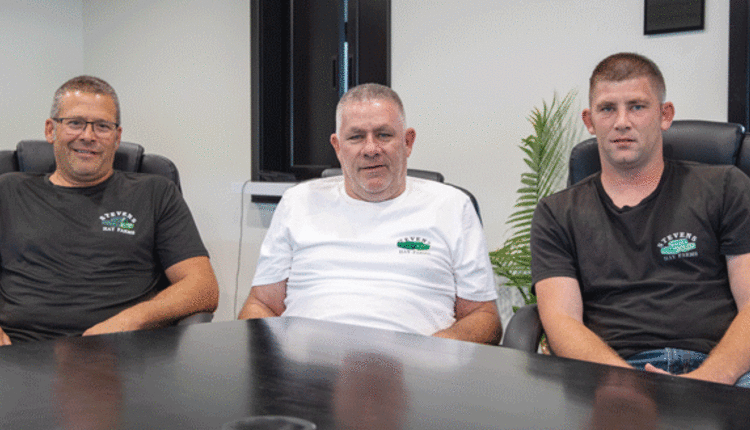
“I didn’t grow up around farming at all,” Stevens noted. “I did do some farming work for my uncle. After high school, I went to tech school for electronics, but after I got out, I came back to work at my uncle’s farm for $1,000 a month. After a few years of that, it made me hungry to do something on my own.”
Stevens continued his early life tale, “I made a deal to buy broken bales from my uncle and purchased five beef cows. From those five cows, I just kept growing. My uncle provided me with an education that was irreplaceable,” he added.
Stevens broke away from his uncle’s employment when he was 28 years old and started leasing hay ground. With help from a kind-natured banker, Stevens bought a used tractor, baler, and swather — all with borrowed money. He eventually purchased a used bale wagon, or “harrow bed” as they’re referred to in that region. “I did custom work for other people and any other work I could find to stay solvent,” Stevens said of those early years. “I then started buying some land and eventually bought this farm in the early 1990s, which at that time had about 100 acres, but it wasn’t all irrigated. My cow herd was still growing, too.”
Stevens had about 120 brood cows before he decided to sell the cattle to help buy more hay acres. He preferred making hay to caring for livestock. Ever since, the number of owned and leased hay acres have just kept mounting. “I never had a cosigner on a loan, but I got a lot of help and advice from neighbors along the way,” Stevens said with a tone of appreciation. “I couldn’t have got to this point without them.”
Family and then some
Stevens’ children have all been involved in the operation while growing up and as adults. Kye, his oldest son, heads up Stevens Domestic Hay Sales. He and his wife, Lindsey, who also helps on the farm, recently became new parents. Hay sales within the U.S. include retail feed stores and dairies.
Steven’s oldest daughter, Brynna, oversees the hay harvesting operation. Her husband, Teddy, works on the hay export marketing side of the business. Another daughter, Berlyn, operates equipment when she can but is currently studying to be a veterinarian. “She’s the best machine operator we have,” said Stevens, who also has two younger children, Dezi and Brady, who are just starting to help out.
The base of operations is a 3-year-old office building that’s located among the plethora of machine sheds and haystacks located at the farmstead. To the east of the office is a building that houses Stevens Hay Exports LLC. Stevens is a 50% partner in the 4-year-old export business venture. Jason Gunderson, who has many years of hay export experience, serves as the CEO for the export business but is also involved in all facets of the farming operation.
With many moving parts, Stevens emphasized that although there are designated responsibilities, everyone pitches in wherever needed. “Sometimes, our secretaries are out running the balers,” he chuckled.
Clean and green
Stevens Hay Farms will harvest about 10,000 acres of alfalfa and 10,000 acres of timothy in 2023. The region receives about 7 inches of rain per year, so irrigation is a must. Hay is harvested within about a 50-mile radius of home base.
Alfalfa is generally seeded in the late summer with a target to have all new seedings in the ground by September 1. The soil is lightly tilled — more like scratched — before seeding and then planted with a Great Plains no-till drill or an air seeder at a rate of 20 pounds of seed per acre.
Raptor herbicide is applied to new seedings around October 1 to control any weed issues. When asked about the need for a fall herbicide treatment, Gunderson said, “There are so many exporters out here that it becomes a beauty contest. Your hay has to be clean and green to have a chance at competing.”
Generally, alfalfa is cut three to four times per year. In a normal year, cutting begins around the middle of May. Stevens likes to cut alfalfa about every 32 days and finish by the end of August. Stands are kept for four years and then are rotated out of alfalfa for at least three years before being reseeded back to alfalfa. Timothy is used as the primary rotation crop, although sometimes potatoes or dry beans are planted either by Stevens or another vegetable grower.
Timothy establishment is similar to alfalfa — in the late summer after a marginal stand of alfalfa is sprayed out. Three cuttings are taken the first production year with the final cutting harvested the last half of September or early October. “I like an aggressive cutting schedule for our timothy to achieve high quality and to get it off before leaf diseases become a problem,” Stevens noted.
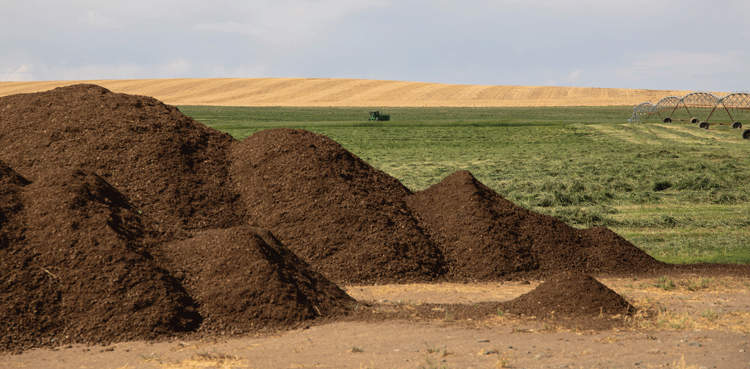
Timothy stands are kept two to four years, depending on when other weedy grasses begin to infiltrate stands and how long the field had been out of timothy before the new seeding was established.
To keep phosphorus and potassium soil fertility in line, Stevens’ preference is to use dry, composted manure, which he purchases from a local distributor. He will also use manure from a nearby feedlot. For alfalfa, the compost is applied at the time of seeding and after the final cutting each year. Commercial nitrogen fertilizer applications are made on the timothy acres. The farm does all of its own fertilizer and chemical applications.
As one might imagine, the equipment line to harvest Stevens’ volume of acreage is extensive and includes seven John Deere 16-foot self-propelled mower-conditioners; nine Twinstar basket rakes; eight New Holland large square balers, which are traded every year; eight Hesston inline 3-tie balers; and 23 semitrucks. Stingers and New Holland bale wagons are used to pick up bales. Stevens also often calls on custom operators to help with baling and bale transport from the field.
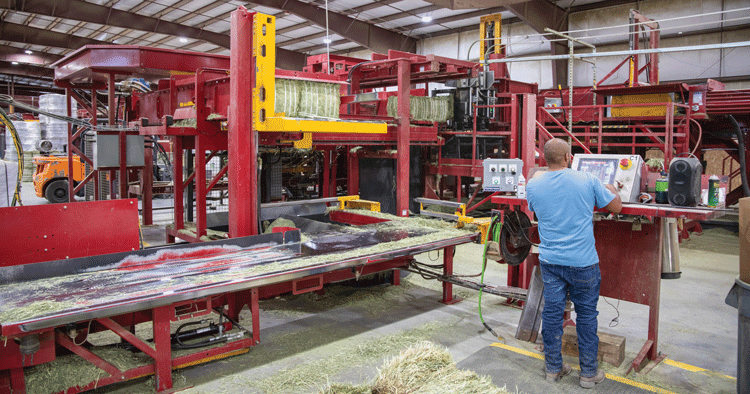
“I like the adjustment options on the basket rakes,” Stevens said. “We can manipulate windrows in a variety of ways.” Hay is usually raked twice, always early in the mornings when there’s still dew.
Vertically integrated
The large pole building that houses Stevens Hay Exports is equipped with two Hunterwood bale presses. The business also has a USDA-certified fumigation facility. A lot of Stevens Hay Farms’ timothy goes to South Korea and Japan. China is their main export partner for alfalfa. “Stevens Hay is the largest organic alfalfa producer for China in Washington,” Gunderson noted. “We produce about 5,000 acres of organic hay each year.”
Gunderson said that being a totally integrated operation has many advantages. “Our export customers like that we grow our own crop,” he said. “It’s also more profitable for us. We have trucks going to the Seattle-Tacoma port every day of the year. The shipping container situation is getting better.”
The knowledgeable hay exporter continued, “It’s important to have as many outlets as possible for our hay. Traditional markets like Japan and South Korea are shrinking. For Japan, the timothy goes to the dairies and beef operations. The really high-end timothy goes to the horse farms. The company also exports some grass straw.
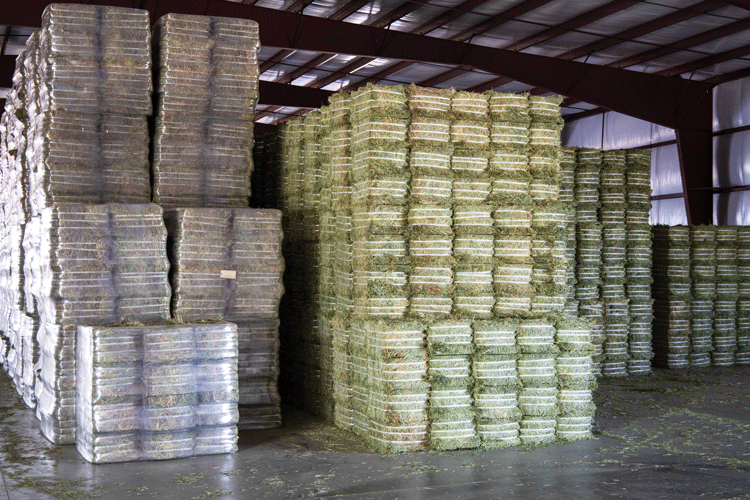
China is a growing alfalfa market,” he said. “West Coast alfalfa is the best in the world. Exports have been strong, but what scares me is that high prices push these countries to look for other options. We may have hit the ceiling on hay prices.”
In addition to export and domestic hay sales, the operation also utilizes a nearby feedlot to take chaff generated from the hay presses and the lower quality hay that sometimes gets made.
A bright future
The growth curve for Bill Stevens’ hay businesses continues on an upward trajectory, although he’s starting to step back and let his trusted family members and employees take the reins. “I look at things more from the 60,000-foot level now,” he said.
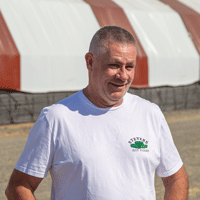
And why shouldn’t he? It’s been a long road from five cows and paying a discount price for his uncle’s broken bales.
Stevens has a well-positioned management team in place with lifelong experience in the business of making and selling hay. He also has dedicated employees. “I say it every year at our Christmas party,” Gunderson said, “When there’s work to be done, everyone around here just jumps in and goes. That’s the kind of environment Bill has built around here.”
It could also be that there’s something in the water.
This article appeared in the March 2023 issue of Hay & Forage Grower on pages 4-8. Not a subscriber? Click to get the print magazine.

